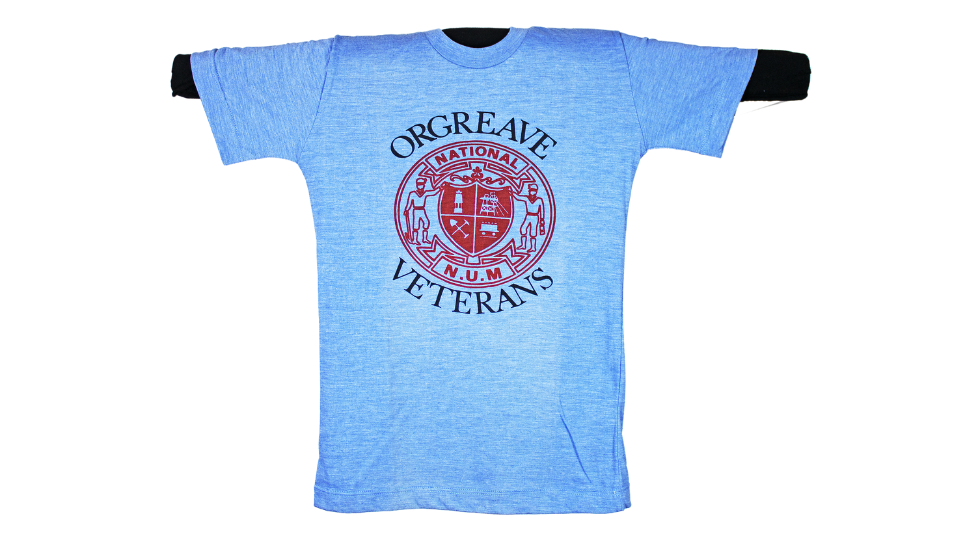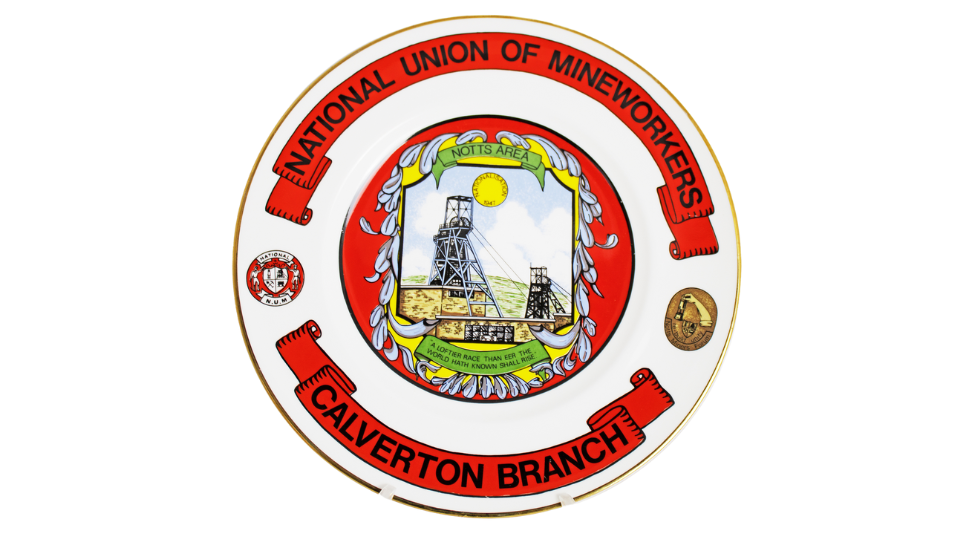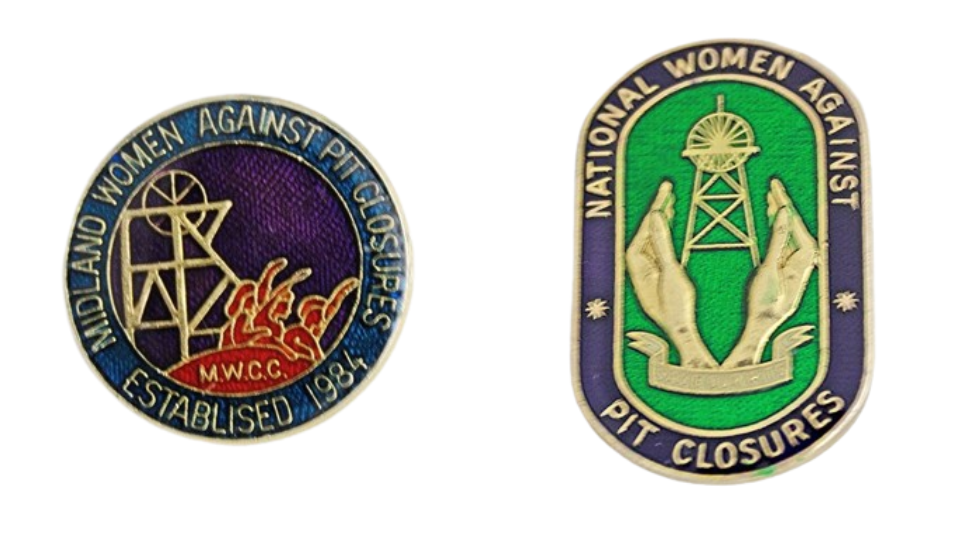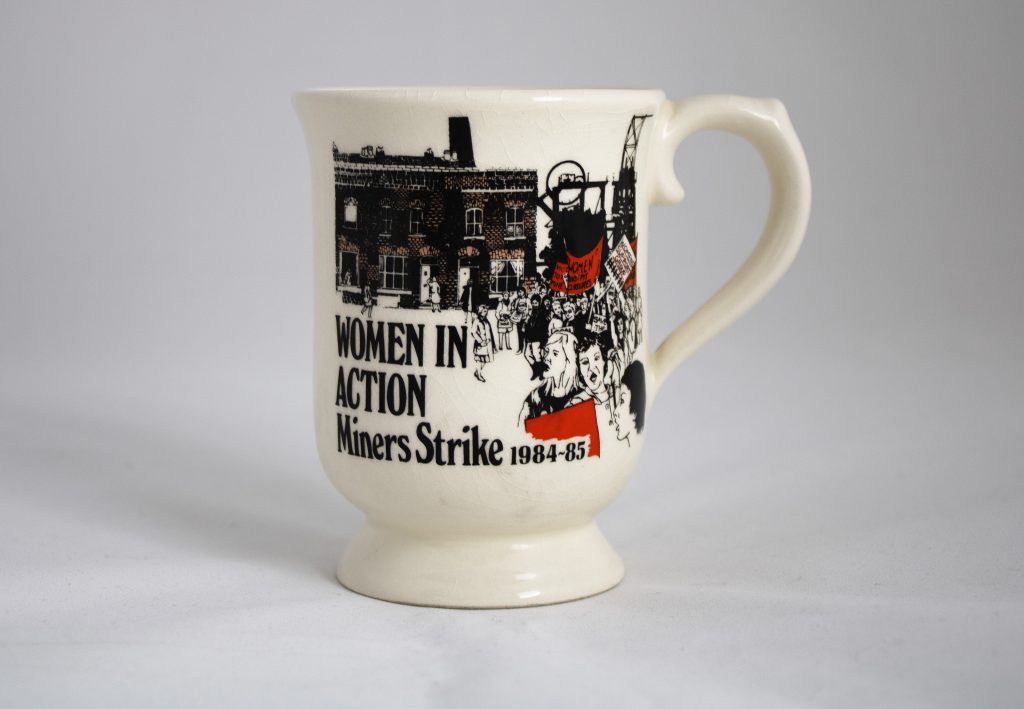
2024 marks 40 years since the beginning of the 1984 to 1985 Miners’ Strike, one of the biggest strikes in British history. Ahead of the anniversary the Collections Team at People’s History Museum (PHM), began work to digitise the museum’s collection of objects related to the strike.
In this blog post, we chatted with PHM’s Collections Officer Kayleigh Crawford to ask about how the museum’s digitisation project has played its part in preserving the legacy of all the workers who fought to save Britain’s mining industry. Objects include a Battle of Orgreave t-shirt.

On 1 March 1984, the closure of Cortonwood Colliery in South Yorkshire led to one of the most important strikes in British trade union history. The National Union of Mineworkers (NUM) called a national strike in protest of more planned pit closures under Margaret Thatcher’s Conservative government. The resulting strike lasted almost a year and saw both unity and division take hold within mining communities. Although the miners were unsuccessful in stopping pit closures, the results of their solidarity and organising has had a lasting effect on British politics.
For PHM, the Miners’ Strike is an especially important anniversary, as the museum owes its current status as the national museum of democracy to the work of the trade unionists whose collection of historical material led to the founding of the museum in 1975. Then called the National Museum of Labour History and based in London, the acquisition of material related to the 1984 to 1985 strike was a very important addition to the museum’s growing collection.
Thanks to funding from the John Ellerman Foundation’s digitisation fund, the Collections Team recently embarked on a project to sort, catalogue, and digitise objects relating to key themes in the museum’s collection. Due to the upcoming anniversary, the Miners’ Strike was one of the first areas prioritised for the project, with a mix of badges, posters, commemorative ceramics, t-shirts, and other ephemera to be photographed and their collection records fully completed in recognition of their importance to the history of trade unionism.
The museum uses a collections management system called KE EMu, where internal records of objects are held. This database helps us to search for objects and find information about them without having to travel to our off site store to look at them in person. Part of this project was to make sure all the information about these objects was up to date on this system. The information included image descriptions, a list of key themes for each object, measurements, the condition of the object, and how it came to be in the museum’s possession.

Finding objects in the collection hasn’t always been the easiest task; this is mainly due to the informal way a lot of the museum’s objects were collected in the early days of its operation, before the implementation of a collections database. A major part of the digitisation project is concerned with tidying up the KE EMu records of certain objects or, in some cases, hunting for the provenance of an acquisition in PHM’s filing cabinets and creating new records for the associated objects.
One of the biggest challenges we continue to run into is the fact that many objects are bulk accessioned under one record. One possible explanation for this is that, at the time, the museum was mostly run by volunteers, passionate about trade union history, and they had limited time for cataloguing due to the ongoing nature of struggles such as the Miners’ Strike. For us today, this means that the number of objects we hold relating to the strike is much higher than an initial search of the database would suggest. What was originally thought to be a collection of just over 100 objects is now looking closer to over 800.
This has had implications for the allocation of staff time, as more hours have been dedicated to Miners’ Strike material than originally anticipated. However, it has also allowed us to better understand our collection and unearthed some amazing objects along the way.

The Ellerman Digitisation Project at PHM has led to the discovery of some hidden gems in the collection. Amongst these finds are a number of badges related to the Women Against Pit Closures solidarity movement, vinyl records of songs sang on the picket lines created by miners’ support groups, and a collection of commemorative ceramics made by the activist and potter Lou Kenton (1908-2012).

T-shirts, collection buckets, miners’ lamps, and an actual lump of coal are amongst other objects that have been highlighted during the project. There were 174 coal mines active during the strike, and each one produced campaign materials specific to that mine. This means we also hold a lot of objects related to local campaigns that took place within the wider struggle. Badges, pamphlets, and sashes are particularly likely to feature the names of specific collieries or NUM branches. We also found a wealth of material relating to key moments in the Miners’ Strike, such as The Battle of Orgreave, and the formation of support group Lesbians and Gays Support the Miners.
Digitising objects for the upcoming 40th anniversary of the 1984 to 1985 Miners’ Strike has been an insightful way to start off the Ellerman Digitisation Project at PHM. It has informed staff of the challenges that we face when dealing with our older collections and has also been a useful lens through which to view the Miners’ Strike and its history. The legacy of the miners who went on strike in 1984 and 1985 is an important one to highlight, and PHM is glad to play its part in shining a light on this important piece of history.
Explore related objects in the Collection Spotlight case on Gallery One, Bread and Roses: Women and the Miners’ Strike on display until 9 September 2024. A display of objects highlighting the role of women in the 1984 to 1985 Miners’ Strike, including material from groups such as Lesbians and Gays Support the Miners and Women Against Pit Closures.
Discover key strikes represented in the museum’s galleries, with a particular focus on objects relating to the 1984 to 1985 Miners’ Strike, on a strike themed guided tour (Thursday 2 May 2024, 12.15pm – 1.00pm).
Join The Fabric of Protest creative workshop (Saturday 11 May, 1.00pm – 3.00pm) for some stitching, chatting, and sharing; exploring community and solidarity, inspired by the 1984 to 1985 Miners’ Strike.
Read the second of a series of three blogs exploring miners’ strikes, from Amy Todd, a PhD student working for PHM. Her blog explores the women’s movement against pit closures during the 1984 to 1985 Miners’ Strike.
View the Miners’ Strike 1984 to 1985 archive guide and discover material about the strike in the museum’s archive.